Spectroscopy Pack PDF
A Condensed Guide to Spectroscopy: The Spectroscopy Pack PDF
- This 15-page printable PDF summarizes all the key concepts you’ll need for spectroscopy topics in a typical introductory organic chemistry course.
- Includes key summaries of NMR, IR, UV-Vis, mass spectrometry and more.
- Full-color, printable PDF file. No physical item will be mailed to you.
This PDF is included with the MOC Membership. (Alternatively they can be purchased separately from the online store).
MOC members will see a download link below (must be logged in to see it)
[Download link hidden - Join here]
What’s included in the Spectroscopy pack
Index of Unsaturation • UV-Vis Spectroscopy • Mass Spectrometry • Fragmentation Patterns • Introduction to IR Spectroscopy • Analyzing IR Spectra • Introduction to NMR • NMR: How Many Signals • Interpreting NMR Spectra • Chemical Shifts and Integration • Splitting • 13C NMR Spectroscopy • Solving Spectroscopy Problems
- UV-Vis Spectroscopy (free sample download) UV light and the HOMO-LUMO gap – The electromagnetic spectrum – Example of a UV-Vis spectrum – Conjugation length vs. UV absorbance – Why do pi-bonds absorb light? – Effect of conjugation on absorbance – Example of a UV-Vis spectrum – What absorbs at longer wavelength? – Absorption of C-O pi bonds
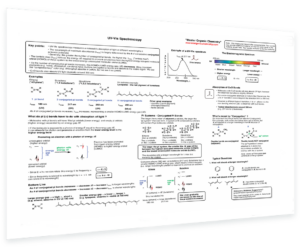
- Index of Unsaturation – All about calcuating the index of hydrogen deficiency (IHD) or Index of Unsaturation – Hydrocarbons with no rings or multiple bonds – How double bonds and rings affect the hydrogen count – The effect of oxygen – Halogens – The unified equation
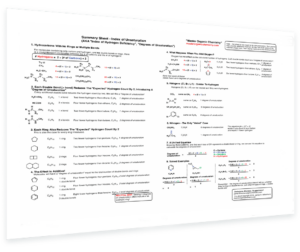
- Mass Spectrometry – Key Concepts – Reading a mass spectrum – Exact mass vs molar mass – Notable isotope distributions – How to determine molecular formula from M
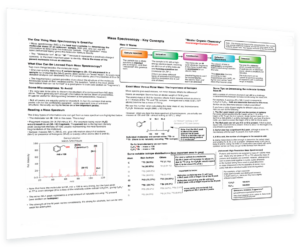
- Mass Spectrometry: Fragmentation – Understanding fragmentation – Fragment analysis – Carbocation stability trends – Examples
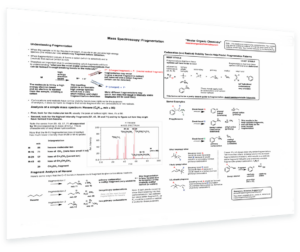
- Introduction to IR Spectroscopy – Key points about IR – The ball and spring analogy – Vibrational energy levels – Interpreting IR spectra – Notable IR frequencies

- Analyzing IR Spectra – Alcohols – Carboxylic Acids – Amines – Amides – Alkynes – Carbonyls – C-H Stretch region
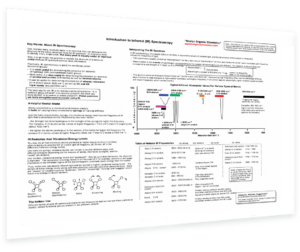
- Nuclear Magnetic Resonance (NMR) Introduction – Nuclear spin – Nuclei in a magnetic field – The chemical shift – What’s “ppm” ? – Upfield and downfield
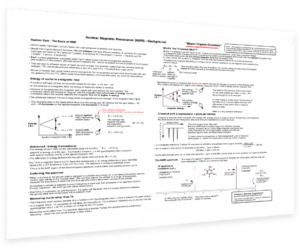
- NMR – How many signals? (1H NMR) – How to figure out “how many signals” questions – Chemical shift equivalence – Equivalence through rotation of the whole molecule – Equivalence through symmetry (mirror planes) – Fast rotation – Stereochemistry – Homotopic protons
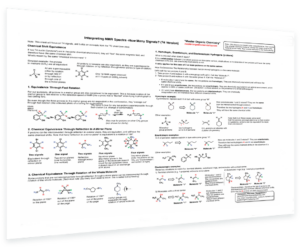
- NMR – How many signals? (13-C NMR) – Homotopic, diastereotopic and enantiotopic protons
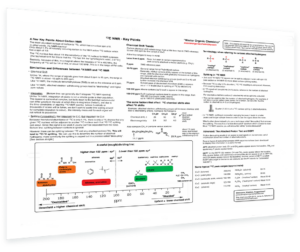
- 13 C NMR – Comparison to 1H NMR – Chemical shift trends – Splitting in 13C NMR – Decoupled spectra

- NMR – Chemical shifts and Integration – Chemical shift – The role of electron withdrawing groups – Area under the peak is proportional to the number of protons – Dealing with integration curves
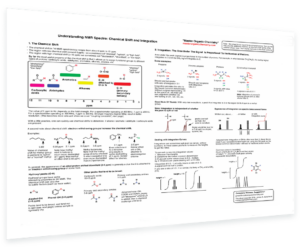
Plus – Analyzing NMR spectra – Solving Spectroscopy Problems From Scratch
Join Master Organic Chemistry Membership Today